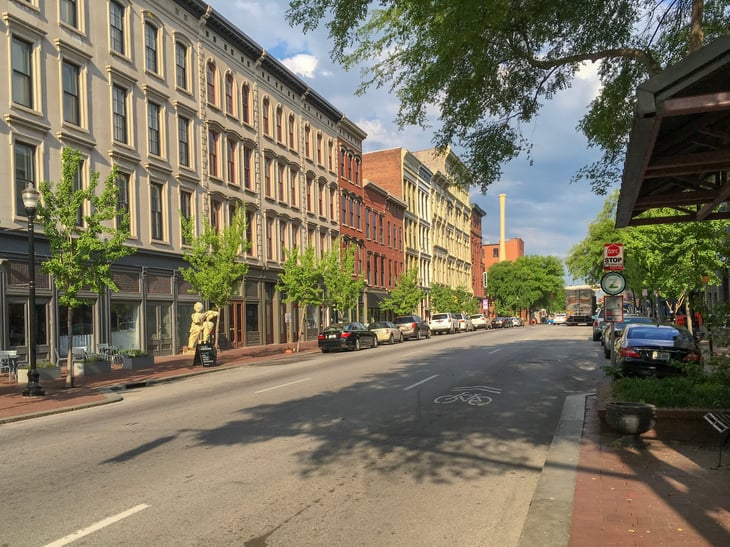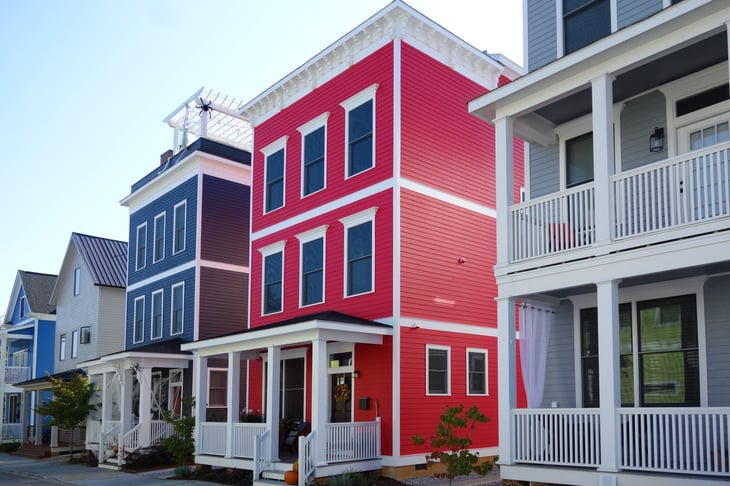
Not everyone is on “team buy” when it comes to housing.
There are many reasons to rent, ranging from lifestyle preferences to financial realities.
If you’re a renter, and you’re looking for a good place to live, real estate marketplace Zillow put together a list of the most affordable markets.
To choose these cities, Zillow looked at 50 metro areas in the U.S., comparing what proportion of their income residents spend on rent.
Nationally, renters typically spend nearly 28% of income on rent, Zillow says. In these affordable cities, rent consumes less than 25% of income.
We’ve listed cities starting with No. 10 and ending with No. 1, the most affordable city for renters in the U.S.
10. Cincinnati

Share of the median household income spent on the median rent: 24.2%
According to the Federal Reserve Bank of Cleveland, favorable economic conditions are helping the Ohio city’s labor market.
Since 2009, the annual per capita income rate rose 1.9%, outperforming the rest of Ohio (1.7%), as well as the nation (1.8%).
Unemployment remains low, with jobs in the trade, transportation and utilities sector leading job growth.
9. Birmingham, Alabama

Share of the median household income spent on the median rent: 24.1%
Birmingham and its largest suburb, Hoover, saw the highest year-over-year decline in its jobless rate of any metro area of at least 1 million people, according to Bureau of Labor Statistics’ July numbers.
The area has a low unemployment rate, 2.7%, which is under the national average of 4%.
The Birmingham area also has a high percentage of good-paying jobs for workers without college degrees.
7. Louisville, Kentucky (tie)

Share of the median household income spent on the median rent: 24%
Doing the rent versus buy math?
In some cities, renting is cheaper than buying a home, and Louisville is one of those places. You could save $329 a month by paying the median rent instead of getting the median-priced mortgage.
On top of that, the cost of living in Louisville is 8% lower than the national average.
7. Detroit (tie)

Share of the median household income spent on the median rent: 24%
Another city where it costs less to rent than to buy, Michigan’s largest city offers a lot of history and culture, including the Detroit Institute of Arts and the open-air Eastern Market.
There are professional sports teams as well, providing a little something for everyone — on top of being an affordable place to rent. The city, which borders Canada, is considered a good value compared with other U.S. cities of the same size.
6. Indianapolis

Share of the median household income spent on the median rent: 23.8%
While the Indy 500 is one perk of living in Indiana’s state capital, there are also other benefits. Low unemployment and strong economic development are bolstering Indianapolis.
Among major U.S. cities, Indianapolis has some of the most affordable real estate.
Large-scale projects are planned, to attract more economic activity. Also, some smaller projects are in the works for the downtown, including infrastructure (like bike trails) designed to improve quality of life.
5. Kansas City, Missouri

Share of the median household income spent on the median rent: 23.4%
Kansas City is one of the top cities for high-paying jobs for workers without a college degree.
The city has a strong community college system and plenty of jobs in customer service, administrative services and general operations management.
The unemployment rate is a relatively low 4%, in line with the national rate.
4. Raleigh, North Carolina

Share of the median household income spent on the median rent: 23.2%
Raleigh might be one of the best areas for a real estate investment, but it’s also a solid choice for renters.
The city that’s one leg of the Raleigh-Durham-Chapel Hill “Research Triangle” — where three major universities are located — is a place where renting is cheaper than getting a mortgage.
What’s more, Raleigh is considered one of the 50 best cities for millennials, thanks to plenty of good-paying jobs.
3. Oklahoma City

Share of the median household income spent on the median rent: 22.5%
The cost of living in Oklahoma’s state capital is 5% below the national average, according to Forbes’ 2018 ranking of The Best Places for Business and Careers. That makes it a fairly affordable place to live.
In Oklahoma City, it costs less to rent than to buy, although the city also is seeing an increase in high-income renters who earn more than $100,000 a year.
2. St. Louis

Share of the median household income spent on the median rent: 21.5%
Looking for a job along with more of a big-city experience? Look no further than the Gateway Arch city of St. Louis, part of one of the largest metro areas in the U.S.
St. Louis is another of the cities with a high percentage of good-paying jobs that don’t require degrees.
St. Louis’ July 2019 unemployment rate was 3.5%, lower than the national average.
1. Pittsburgh

Share of the median household income spent on the median rent: 21.4%
This Pennsylvania city is unusual in that, according to PEW researchers, its population is shrinking but growing wealthier. Per-capita income is up 24% since 2000, even though the city lost 95,000 residents in that time.
Pittsburgh has a high proportion of STEM (science, technology, engineering and math) jobs, thanks to local academic institutions such as Carnegie Mellon University and the University of Pittsburgh, which sponsor tech incubators to help grads create startups locally. Those jobs, along with the business, management and arts and media sectors, provide the city with income growth and productivity.
How much of your income do you spend on rent? Tell us in a comment below, or at the Money Talks News Facebook page.





Add a Comment
Our Policy: We welcome relevant and respectful comments in order to foster healthy and informative discussions. All other comments may be removed. Comments with links are automatically held for moderation.